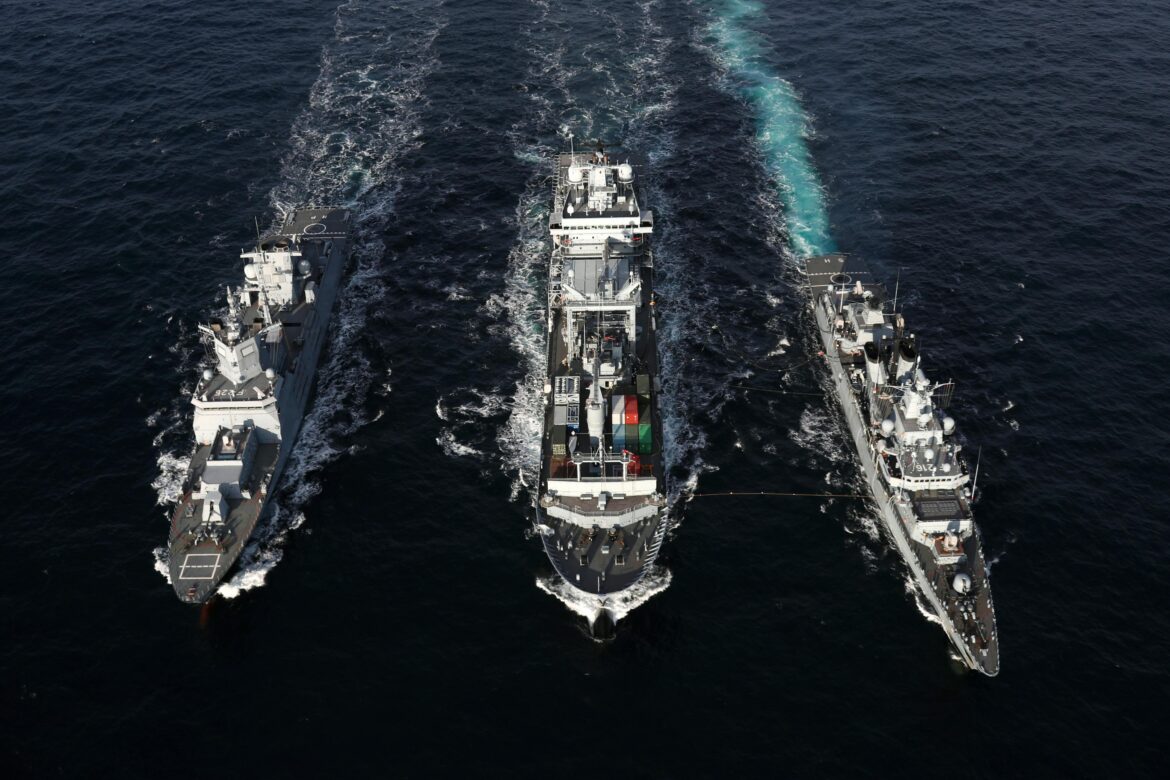Military exercises draw global attention as both nations emphasize “defensive posture”
Tokyo, August 3, 2025 — Russia and China have commenced a major joint naval exercise in the Sea of Japan, involving dozens of warships, submarines, and aircraft, in what both governments claim is a demonstration of “regional stability and defensive cooperation.” The drills, which began this morning and are expected to last several days, are being closely monitored by neighbouring nations including Japan, South Korea, and the United States.
This is the fourth such joint exercise held in this strategic body of water since 2021, but analysts say the timing, scale, and weaponry involved indicate a show of force designed to push back against Western alliances and military influence in the Asia-Pacific.
Details of the Exercise
According to the Russian Ministry of Defence, the drill, codenamed “Northern Shield 2025”, features:
- 20+ surface vessels including guided missile destroyers
- 4 nuclear-powered submarines
- 10 maritime patrol aircraft
- Simulated anti-ship missile launches
- Joint anti-submarine warfare maneuvers
The Chinese People’s Liberation Army Navy (PLAN) dispatched ships from its North Sea Fleet, while Russia contributed units from its Pacific Fleet. The Russian flagship Varyag and the Chinese destroyer Nanning are reportedly leading the exercise.
In a joint statement released early Sunday, both nations stated:
“These manoeuvres are strictly defensive and are aimed at improving coordination, maintaining maritime security, and safeguarding international trade routes.”
Global Reaction: Strategic Concerns and Diplomatic Pushback
While the Kremlin and Beijing insist the exercise is a routine training operation, regional powers and Western nations have raised concerns about the underlying message of the drills.
Japan’s Reaction
Japanese Defence Minister Hiroshi Moriyama called the drills “provocative,” adding that they were being held “alarmingly close” to Japanese territorial waters. The Japan Self-Defense Forces deployed surveillance aircraft and destroyers to monitor the activity.
South Korea’s Concerns
South Korea’s Ministry of Defence issued a statement warning against “any deliberate escalation that may threaten maritime security.” South Korea has also increased readiness levels of its eastern coastal naval bases.
NATO and U.S. Monitoring
The U.S. Indo-Pacific Command confirmed that two Arleigh Burke-class destroyers and a P-8 Poseidon surveillance aircraft are currently tracking the drills. A Pentagon spokesperson stated:
“We urge all parties to exercise transparency and restraint. We remain committed to the security of our allies in the region.”
A Shift in Military Strategy?
Military analysts believe that this latest round of joint drills represents more than symbolic cooperation—it is part of a broader shift in Eurasian military doctrine:
- Increased Russian reliance on naval projection as land forces remain tied up in Ukraine.
- China’s strategic intent to normalise PLAN operations beyond the East China Sea and Taiwan Strait.
- Hybrid command structures tested for joint deployments between Beijing and Moscow.
Retired British Admiral Jonathan Meadows told The Breadline Bulletin:
“These drills are not about short-term threats. They are designed to rehearse a new balance of power in the Pacific.”
Escalation in Context: The Wider Geopolitical Landscape
The drills come amid a flurry of geopolitical flashpoints:
- U.S. tariffs on Chinese tech and semiconductors, sparking retaliatory moves.
- Heightened NATO presence in the Baltic and Black Sea.
- Tensions in Taiwan, especially following the July 2025 cross-strait blockade simulation.
- Increased defence spending by Japan, which now exceeds 2% of GDP for the first time since World War II.
International Maritime Law and Legal Boundaries
Experts have raised legal questions over parts of the exercise, particularly missile testing near the Exclusive Economic Zones (EEZs) of Japan and South Korea. While the Sea of Japan is international water, missile launches must comply with UNCLOS regulations and notification protocols.
The International Maritime Organization (IMO) has not received full missile trajectory disclosures from either Russia or China as of Sunday morning, according to sources in Geneva.
Public Response and Media Reactions
In China, state broadcaster CCTV framed the drills as a “symbol of unbreakable Sino-Russian friendship”, while Russian media highlighted “resistance to Western military expansion.” On the other hand, international outlets have largely focused on potential escalation risks and unintended collisions in busy sea lanes.
Social media in Japan and South Korea has erupted with concern, with hashtags like #SeaOfJapanDrills and #EasternThreat2025 trending on X (formerly Twitter).
Final Thoughts
The joint Russia-China naval drills in the Sea of Japan are more than a military display—they are a calculated geopolitical move in a deeply contested region. As great power rivalries evolve in the post-pandemic, post-Afghanistan global order, Asia-Pacific waters may become the new frontlines for influence, deterrence, and conflict.
For now, the world watches—warily—from the shorelines.
FAQs
1. What is the Sea of Japan’s strategic importance?
It borders Russia, Japan, and Korea, making it a key zone for trade, surveillance, and military deployment in the Asia-Pacific.
2. Has Russia and China done joint drills here before?
Yes. Since 2021, the two countries have increased joint drills, but this is one of the largest and most complex to date.
3. Are these exercises legal under international law?
Generally yes, but concerns arise when live-fire drills occur near EEZs or without proper disclosure of missile trajectories.
4. Could these drills provoke a military response?
Not immediately, but they increase the chance of naval accidents and tensions between nearby militaries.
5. Why now?
Analysts believe both countries are responding to increasing NATO-Asia alliances, economic sanctions, and regional defence buildups.
More From The Breadline Bulletin
- Manhattan Office Shooting Leaves Four Dead, Including NYPD Officer
- Massive 8.8-Magnitude Earthquake Hits Russia’s Far East, Tsunami Warnings Issued for Pacific Rim
- Trump Threatens 20–25% Tariffs on India Over Russian Oil Ties
- NASA and ISRO Launch World’s Most Advanced Earth-Mapping Satellite Today
- Deadly Shooting in NYC Office Tower Shocks Nation
Resources & References
- Sky News – Ukraine War Latest
- Japan Ministry of Defence Press Briefing – August 3, 2025
- UNCLOS – United Nations Convention on the Law of the Sea
- Pentagon Press Office
- CCTV International
Disclaimer
This article presents verified information available as of August 3, 2025, regarding Russia-China military drills. The Breadline Bulletin does not speculate or infer military intentions beyond what is confirmed through official and credible sources. Readers are encouraged to follow developing updates from government and international agencies.
SEO Meta Info:
SEO Title: Russia, China Begin Naval Drills in Sea of Japan
Slug: russia-china-naval-drills-sea-of-japan-august-2025
Meta Description: Russia and China launch joint naval drills in the Sea of Japan, raising regional tensions and triggering global monitoring.


